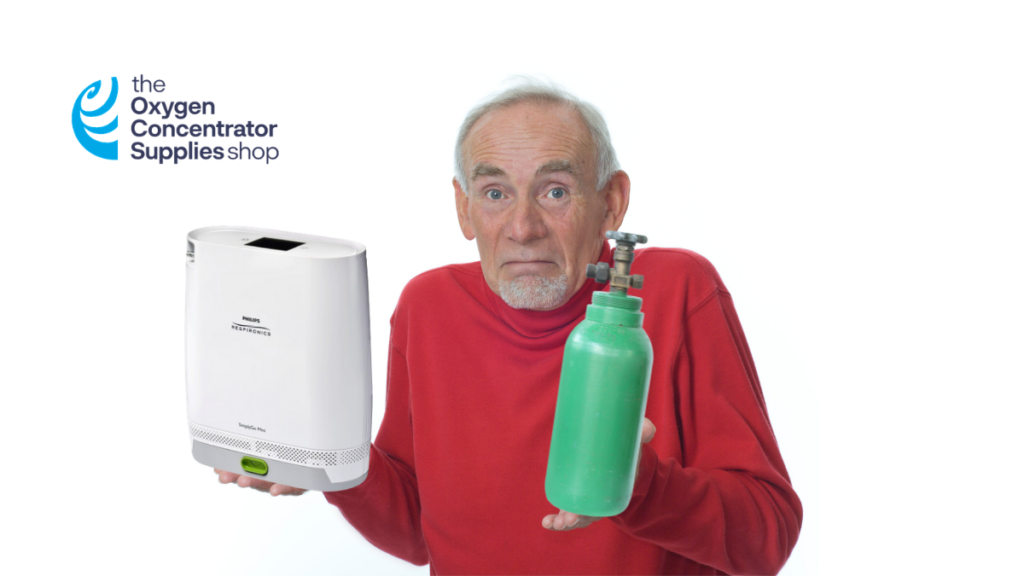This post was updated from its original version on June 7, 2021.

Oftentimes, patients use the terms “oxygen concentrator” and “oxygen tank” interchangeably due to the fact that they both deliver supplemental oxygen. However, both these products are completely different—from the device itself to the way they deliver oxygen to the device itself and associated safety concerns. Here’s a breakdown of their similarities and differences.
Oxygen Delivery Method
One of the primary differences of an oxygen concentrator vs an oxygen tank is that an oxygen tank contains a specific amount of compressed oxygen. A nozzle on the tank controls the amount of oxygen released. A tube and cannula deliver the supplemental oxygen to the patient. However, when the oxygen in the tank runs out, a new tank is needed. A person who requires a consistent supply of oxygen needs to store multiple tanks in-house as back-ups.
No Need to Refill
Unlike oxygen tanks, concentrators do not contain any compressed oxygen. Instead, these devices continuously filter the surrounding ambient air and convert it into supplemental oxygen.
Using a tube and cannula, the patient then receives the supplemental oxygen. Since ambient air is everywhere, there is no limit to the amount of oxygen available. Users simply need access to electrical or battery power to keep the device running.
Light Weight
Most oxygen concentrators are much smaller than oxygen tanks and take up less space in the home. They are often on wheels and can move easily from room to room.
While on-the-go, portable oxygen tanks are an option, but they contain less compressed oxygen than their home counterparts. Instead, since portable oxygen concentrators run on batteries with no oxygen limit, they are ideal for everything from a trip to the grocery store to a family road trip. Portable oxygen concentrators vs oxygen tanks are the best option for staying active.
Safe to Use
While oxygen tanks were previously the primary treatment for chronic lung disease and oxygen therapy, they are now considered more dangerous than oxygen concentrators. Compressed oxygen is highly susceptible to fire and can explode. Plus, oxygen tanks can leak. Oxygen-enriched fires burn hotter and are more difficult to put out. Concentrators do not store compressed oxygen, thus reducing unnecessary risk.
Inexpensive
One notable difference between oxygen concentrators vs oxygen tanks is the availability of a constant supply. Oxygen tanks have a finite amount of oxygen. Once they run out, they need to be replaced. Conversely, oxygen concentrators are continuously filtering air from the environment.
A constant supply of oxygen tanks over time begins to add up. As a one-time purchase, oxygen concentrators save money long-term.
Variety
Oxygen concentrators are available for home and portable use. They feature pulse dose and continuous dose capabilities and include many user-friendly features.
If you are currently using oxygen tanks and are ready for the safer, more practical solution of oxygen concentrators, call us 888-941-1688 or email us at contact@oxygenconcentratorsupplies.com. Our knowledgeable customer care team can answer all your questions or offer product recommendations for the best oxygen concentrator to fit your needs.
This post was originally published on June 7, 2021 and updated on August 28, 2023.



